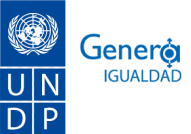While the setting, the country and the specific circumstances may differ, rape, sexual assault and other forms of violence against women and girls happen everywhere.
Globally, 1 in 3 women have experienced physical and/or sexual violence at some point in their lives, leading to potentially negative effects on their health and well-being, education and economic empowerment, among other consequences.
Each year the International Day for the Elimination of Violence against Women, on 25 November, and the global campaign 16 Days of Activism Against Gender-Based Violence call for the prevention and elimination of violence against women and girls. The theme for this year’s 16 Days of Activism campaign is Orange the World: Generation Equality Stands against Rape, focused on rape, including the issues of consent, the use of rape as a weapon of war and multisectoral services and a survivor-centered approach.
While misconceptions abound, rape is not actually about sex. It’s motivated by power and control, which, along with attitudes and norms, can create an environment where sexual violence is normalized, also known as rape culture. Sexual objectification, using misogynistic language and glamourizing sexual violence can help fuel rape culture, including through such behaviors as victim blaming, trivializing sexual assault and tolerating sexual harassment.
In recent years, campaigns such as #MeToo, #Niunamenos and #BalanceTonPorc have shone a brighter spotlight on this global concern, including on the widespread impunity for perpetrators. These voices will likely only grow stronger as we approach the 25th anniversary next year of the adoption of the Beijing Declaration and Platform for Action, the bold blueprint for the empowerment of women and girls.
However, though gender-based violence (GBV) is pervasive, communicating about this violence in an ethical and sensitive way is less common. In covering these stories, special care must be taken to ensure that the language and visuals aren’t enforcing stereotypes and gender inequalities, further contributing to a survivor’s trauma or perpetuating rape culture. As we share stories on sexual violence and rape in the lead up to and during the 16 Days of Activism Against Gender-Based Violence campaign, here are four tips to help cover this issue more accurately and thoughtfully.
- Don’t victimize:
While GBV can have physical and psychological effects, avoid perpetuating the myth that it permanently ruins the lives of those who experience it. Don’t portray your subjects as powerless. Instead, highlight resilience and healing and a survivor’s power to manage and find solutions to improve their lives. Also note that many who’ve experienced sexual violence prefer to be described by the term “survivor” instead of “victim.”
When covering a survivor’s story, also be careful not to victim blame. Avoid asking too many “why” questions during the interview, such as “why do you think you were raped?” or “why did you go home with that person?” Be wary also of other language that might imply the survivor is responsible or to blame, such as scrutinizing a survivor’s outfit, mental state or history. This is often irrelevant and takes focus away from the perpetrator’s role and responsibility.
- Put the survivor first
Talking about rape and sexual assault can be traumatic for survivors and take a lot of emotional energy. No one is obligated to share their stories, so treat survivors and the telling and retelling of their stories with respect. Listen if they say no and decline an interview. If they do agree, respect a survivor’s boundaries and how much they want to divulge. Don’t push for information, especially graphic details.
Also, make sure to uphold a survivor’s safety, privacy and confidentiality. Be clear about how and where the stories and/or photo will be used and the potential implications so the survivor can make an informed decision. Offer anonymity, especially if a survivor’s safety could be compromised by sharing their story, and don’t share details that could put survivors at further risk.
- Be mindful of language:
Language helps shape our understanding of GBV, as words can reflect subtle assumptions about responsibility, agency and the violence itself. So be sure to use language that is neutral, clear and specific. For example:
- Avoid misrepresenting GBV as a “normal” part of the culture or even “universal” (as it could suggest immutability). Describe sexual violence as violence and not as sex.
- Verbs such as “alleged,” “admits” and “confesses” can imply that the survivor should feel responsibility and shame. Instead, just use “said.”
- Using the passive voice to say the survivor “was raped” can make invisible the perpetrator’s responsibility for the violence. Instead, use the active voice.
When describing a survivor’s assault, try to balance how much graphic detail is included, as too much can be gratuitous but too little can weaken the survivor’s story. Use direct quotes from the survivor when possible rather than your own phrasing or interpretation so they can better control their own narrative.
- Tell a wider story:
While an individual survivor’s story is important and a strong way to engage the audience, focusing just on it risks being sensationalist and doesn’t tell the whole story of why GBV occurs. Instead, put the survivor’s narrative into a wider context, one that can include statistics on the extent of the issue and patterns of risk, causes of violence, prevention efforts and links to broader social concerns. Be sure to include the voices of a diversity of survivors, including those of color, LGBTQ survivors and other underrepresented voices.
Keep in mind too that first-person survivor stories aren’t the only way to highlight the issue of gendered violence. Consider expanding the story’s focus beyond a survivor’s narrative, talking to others who have played a role in committing or addressing sexual violence, such as law enforcement, community members, health professionals, advocates and the perpetrators themselves.
These are just some tips to consider when covering GBV. For more information:
- 10 Principles of Gender-Responsive Communications for Development Toolkit, UNDP
- Gender-Based Violence, Media and Communications, UNICEF
- Reporting on Gender-based Violence in the Syria Crisis: A Journalist’s Handbook, UNFPA
Written by Juhie Bhatia, Communications Specialist for the Gender Team, Bureau for Policy and Programme Support, UNDP.

